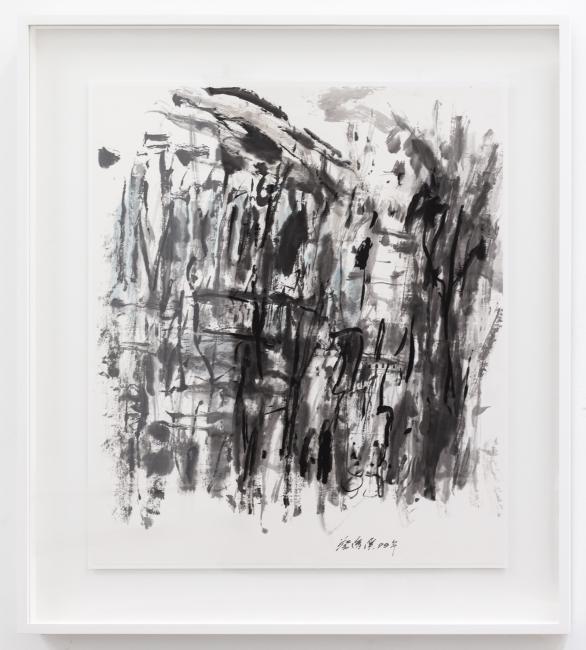Artwork Details
A Junction on Rochor Road
Credit Line: Gift of Artist 2006, Collection of SMU
This artwork is part of 25x25 Campus Art Tour.
Listen to the audio description of the artwork here.
Transcript:
If one was unaware that this is a painting from Ek Kay's Street Scenes series, it would be difficult to make out the two-storey shophouse, beneath the layers of vertical washes and patchy stains that obscure it. It looks much like an abstract expressionist work, with its agitated surface painted in aggressive strokes of distorted broken lines. The saturated washes and broad brush strokes crowd the composition to create a brooding fragmented landscape, threatening to dissolve the already disfigured image. Conditions of dereliction and decay take possession of our vision.
In the 90s, Ek Kay continued with his formal education in Western art in Australia where he obtained his Bachelor of Fine Arts and Master of Arts. This education provided him opportunities to reassess and experiment through unfamiliar lenses and new perspectives. In particular, with his ink practice, he explored abstraction, minimalism and emotive responses, which are seen here in this painting.
--
Chua Ek Kay (1947-2008) was one of Singapore's leading contemporary Chinese ink painters. Born in China, Chua came to Singapore with his family in the 1950s. Here he studied Chinese ink painting under Fan Chang Tien. In 1991, he was the first Chinese ink painter to win the United Overseas Bank Painting of the Year Award. He later took up formal training in contemporary art, receiving a Bachelor of Fine Arts from the University of Tasmania in 1994 and a Master of Arts (Honours) in Visual Arts from the University of Western Sydney in 1995. He was awarded the Cultural Medallion in 1999.
This artwork is from the Street Scenes Collection, a suite of 30 paintings donated by the artist in 2006 and currently housed at Lee Kong Chian School of Business. The Street Scenes Collection spans two decades of Chua's artistic practice, from 1986 to 2006, and pictures narrow alleyways, temples of worship, old shophouses and historic sites in Singapore, Kathmandu, Yogyakarta and Jiangnan. In later years, he was keener on evoking feelings rather than rendering actual physical architecture. Particularly, his depictions of Singapore city streets—from Little India to Ann Siang Hill—are suffused with feelings of melancholy as he captures history passing through the once-familiar streets he has seen grown, thrived, and waned over time.

